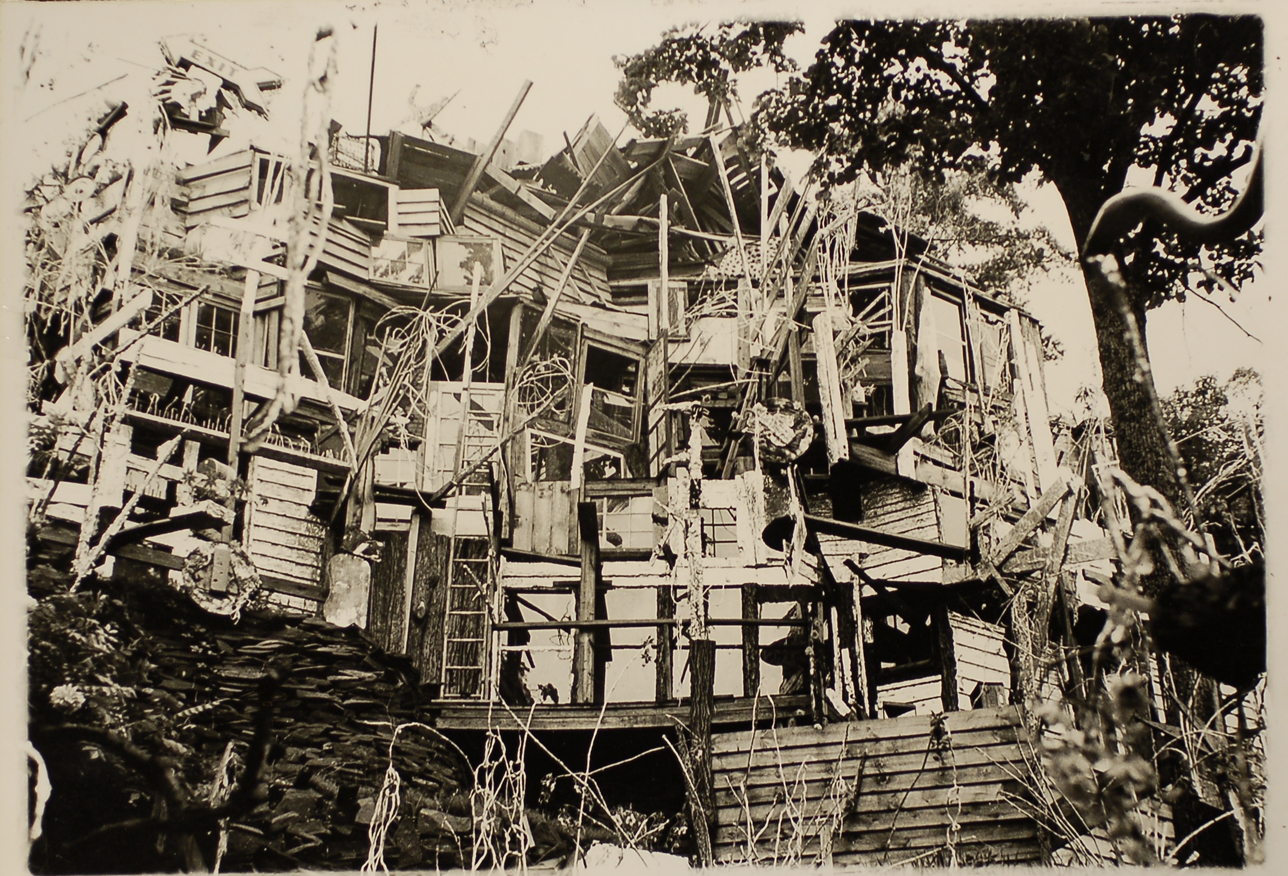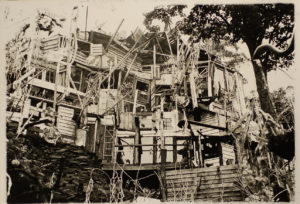To some, Clarence Schmidt (1897-1978) was an endearing Santa Claus-sized man, and to others, he was the grandfather of pop art. Whatever your position, no one can deny his outrageous take on life in the 1960s. His colossal “House of Mirrors” (HOM) ranged up a hillside atop Ohayo Mountain. It consisted of seven stories of tiered window frames and balconies with runways and gardens. Parts of it incorporated found objects from area landfills like car bumpers, wheels, bicycles, lawnmowers, guitars, saw blades, Rheingold (his favorite) beer cans, and doll parts. The latter were thoughtfully donated by Kevin Sweeney of Simulaids. All these bits and pieces of our waste-driven society were artfully placed and curated by Schmidt into a pleasing shrine called home.
Clarence Schmidt moved to the area in the 1920s and began work on HOM in the 1940s. He was a stone mason and plasterer by profession—and was immensely strong and capable. Initially, he built a log cabin. As he constructed the additional stories, the cabin was dubbed by Clarence the “Inner Sanctum” and remained his living space. Radiating from it was a labyrinth of tunnels filled with found objects, some of which were covered with tin foil and potted plants. Engineering, however, was not his forte. Occasionally he miscalculated loads and lost rooms down the hillside.
From the 1940s to the early 1960s, Clarence toiled out of the public eye. It chanced, however, that his growing building upset some of his neighbors. They, in turn, went to court to try to get his masterpiece torn down. It was around this time, in 1964, that several media groups from New York became interested in his enterprise. The Saturday Evening Post’s “Miracle on the Mountain” brought sightseers—and more media crews—from around the world. One neighbor recalled that for a time, a state trooper had to direct traffic along Spencer Road to keep things orderly.
Clarence Schmidt styled himself a regional folk hero and spoke of himself thusly: “I’m a cross between Rip Van Winkle, Paul Bunyan [and] there’s a lot of Robin Hood in me. I became some greater part of this mountain up here. Why, when I walked down the road, the trees bent down on my behalf.”
In 1968 HOM burned down. Thereafter Clarence was never the same. He died in a nursing home in Kingston, NY, in 1978.
~ Weston Blelock



0 Comments